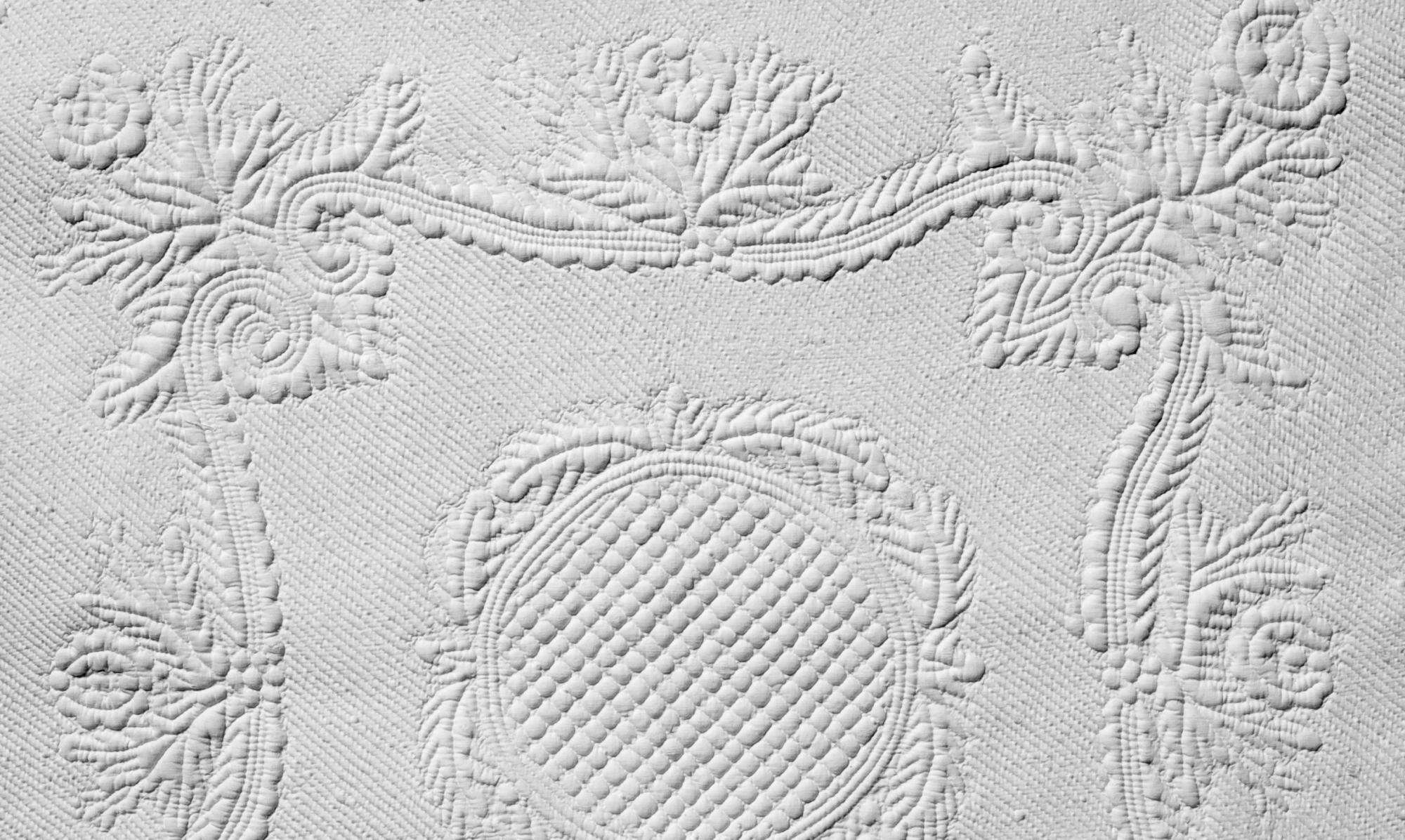
Marseille
Nov 13, 2010-May 22, 2011
White Corded Quilting

Marseille: White Corded Quilting, the first major display in the world of all-white quilted and corded French needlework, explores its development in Marseilles, the fusion of technique with design imagery, and the integration of this needlework into other cultures as it was exported, adopted and re-transformed over three centuries in three continents.
In Marseille, professional needlewomen worked graceful imagery into fine materials. The lovely garments and furnishings made by their hands seduced consumers in all of Europe. These supple, all-white corded and quilted furnishings-from bedcovers to quilted bodices and caps-grew out of the thriving textile traded centered on France's Mediterranean port of Marseilles. During the the seventeenth century, the region's interpretation of quilted needlework became so treasured that it seduced markets throughout Europe and its far-flung colonies.
In English, the name of the Provencal port city is spelled with an s on the end–Marseilles (pronounced mar-SAY). We title this exhibition Marseille to honor those needlewomen of Provence who manifested such incredible expertise and understanding of materials. In the needlework ateliers of Marseilles, the technique of corded quilting evolved from a crude technique into the refined works of art on display here.
Broderie de Marseille is a form of three-dimensional textile sculpture using plain white cloth and white cotton cording, deftly manipulated with needle and thread to reveal patterns highlighted by the resulting play of light and shadow on the textile surface. Skillful execution of broderie de Marseille resulted in delicate, refined work that graced the homes an figures of aristocrats and launched an international passion for all-white corded needlework. The quilted works were filled with imagery expressing contemporary values, such as folk legends (Tristan), heraldic devices and royal monograms (on bedcovers), and floral wreaths an fruits symbolizing good fortune and fertility (on wedding quilts). Contemporary versions, today often referred to as "matelasse," are machine made and thus lack the intimate connections to the work represented by the confections of the original needleworkers-almost all of them presumably women.
Marseilles Harbor bustled with activity in the 18th century as this contemporary engraving shows. Ships arrived from Amsterdam, Barcelona, Dublin, Gibraltar, Hamburg, Lisbon, London, and Stockholm carrying commodities. They left Marseilles laden with almonds, olive oil, soap, spices, wine, and textiles of all sorts. From the last decades of the 1600s ships sailed from the harbor carrying thousands of lovely quilted and corded- work furnishings and garments made in port-city ateliers. They were always known by the name of the city where they were made–piqués de Marseille